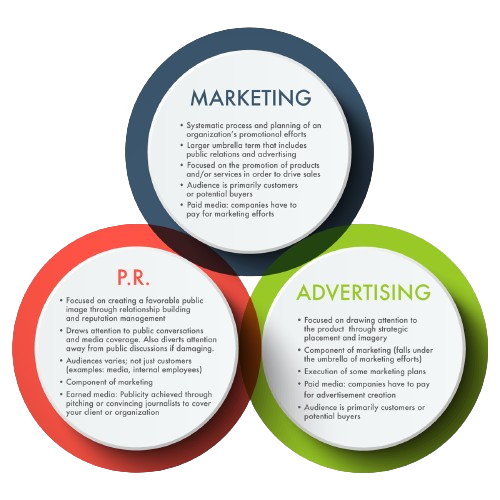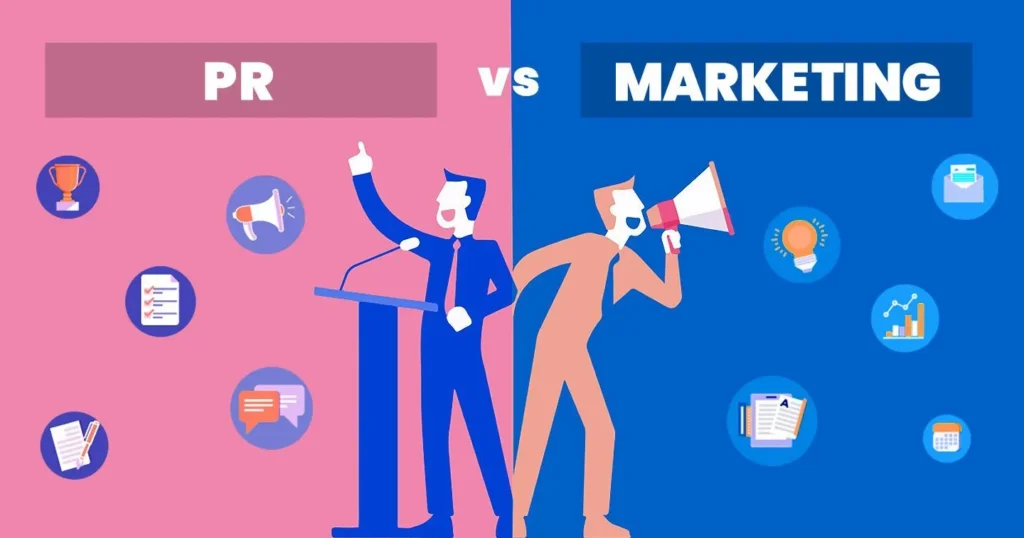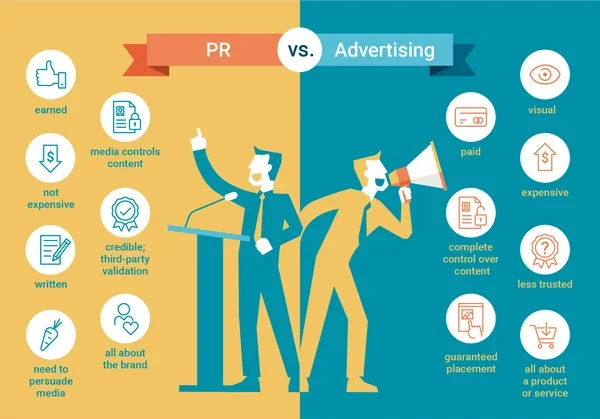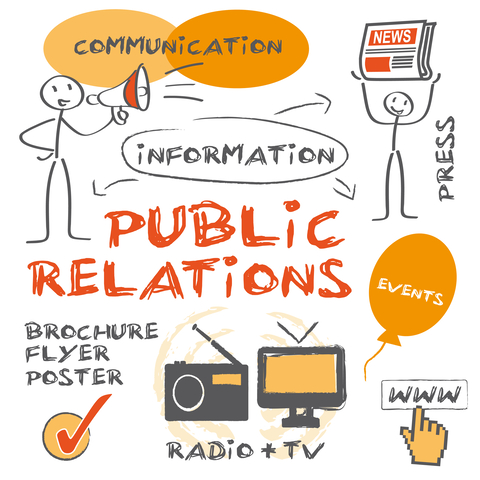
Public Relations vs. Marketing:

Marketing and Public Relations (PR) share common activities, such as customer interaction for feedback. However, their primary focuses differ. Marketing is often centered on driving sales, promoting products or services, and ensuring financial success. In contrast, PR is more dedicated to managing the overall reputation of a company or brand. While marketing uses customer feedback to understand sales trends and enhance products, PR utilizes this information to gauge customer satisfaction, address concerns promptly, and maintain a positive image.
- Public Relations vs. Advertising:

Advertising and Public Relations serve distinct purposes. Advertising aims to capture public attention, typically through various media channels, to promote products, announce expansions, or communicate pricing changes. In contrast, PR takes a more strategic and thoughtful approach, focusing on how a company should interact with both internal and external stakeholders. PR may opt for a lower profile at times, emphasizing strengthening relationships with the public without being in the spotlight, while advertising intentionally seeks visibility.
- Public Relations vs. Communications:

Public Relations and Communications are closely connected, involving the outward portrayal of information to build brand, image, or relationships. Communications may exist as a separate department responsible for verbal or written statements issued internally or externally. While there’s overlap, a potential distinction lies in the exchange of information. PR can be seen as a one-way channel, disseminating information to shape a favorable public image. On the other hand, Communications may emphasize a two-way process, actively receiving feedback and making changes based on collected information. Despite potential differences, many companies experience significant overlap between PR and Communications.
In summary, these distinctions help clarify the unique roles each department plays within an organization. While there is overlap, understanding the nuanced differences between PR, Marketing, Advertising, and Communications is crucial for effective coordination and strategic management of a company’s public image and relationships.